Discovering How to Cook Tasty Gluten-Free Job’s Tears is going to be your best learned cooking skill for this year and beyond.
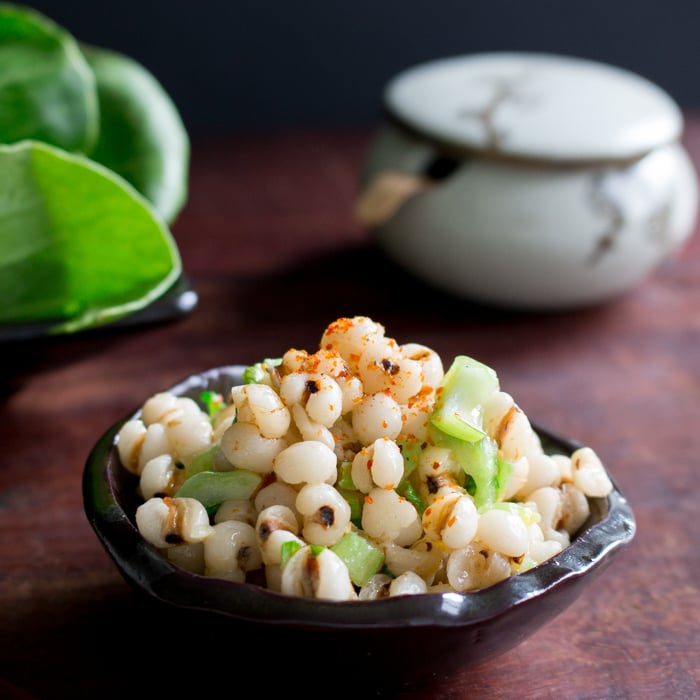
Seeds of Job’s Tears are a delicious nutritious Ancient Asian grain that is going to bypass rice and quinoa as the new gluten-free SUPER grain.
In this article, you are going to learn how to cook Job’s Tears to be able to use in other dishes, how to make a tea and soup out of job tears and better understand the healthful Traditional Chinese Medicine (TCM) benefits of enjoying Job’s Tears. Finally, we will also cover individuals who should avoid eating Job’s Tears.
Job’s Tears is a very odd name and one thing we can guarantee that this post will not be talking about the dreaded daily work grind or obnoxious bosses that make your life miserable. This post is all about how to COOK Tasty Gluten-Free Job’s Tears (the ancient Asian Grain)
What are Job's Tears?
Job’s Tears has many different names such as Coix seeds, HATO MUGI and Yi Yi Ren, Adlay Millet, Adlay Seed, Chinese Pearl Barley, Coix, Coïx, Coix Lachrymal, Coix Lachryma-jobi, Coix Lacryma, Coix lacryma-jobi, Coix ma-yuen, and many others. Sometimes, Job’s Tears can also be referred to as Chinese Barley but Jobs Tears are not barley, even though they look slightly similar. The name Job’s Tears comes from the hard, shining tear-like seeds that have a bluish-gray porcelain appearance BEFORE they are husked like the picture above.
Job’s Tears is the whole grass plant but the seeds of the Job’s Tears are the delicious and edible part of the plant once the hard outer shell is removed. The harvest season for Job’s Tears is in the fall. The unshelled seeds of Job’s Tears have been sewn into prayer beads, ancient toys and teething rings and many other uses.
Where can you find Job's Tears?
Job’s Tears are a tasty naturally gluten-free Asian grain which has a fun slightly chewy texture, mild tasting and is hearty and filling. Job’s tears have been used as a cereal for many of thousands of years in Asia because it is high in protein to carbohydrate ratio. Jobs Tears can be found in Asian food stores and online. If you are living in Hong Kong, you can find Job’s Tears in Park and Shop and Welcome Stores near the rice isle or where they have their Chinese Medicine Soup packets. Job’s Tears are naturally gluten-free but you need to make sure that they are manufactured in a gluten-free facility if you are celiac.
The texture of Job’s Tears is difficult to explain but kind of like hominy and slightly chewy but tastes more like oatmeal with a nutty taste. Job’s Tears can be cooked sweet or savory. It is time to replace the BORING other gluten-free grains such as quinoa and rice for this fun ancient Asian gluten-free grain; Job’s Tears.
Learning how to cook tasty gluten-free job’s tears is going to open the menu options and give you all kinds of kitchen inspiration.
How to cook Tasty Gluten-Free Job’s Tears to be used in other dishes…
- Rinse 1 cup dried Job’s Tears in a colander just like you would rice before cooking it.
- Add your rinsed dried job’s Tears in a pot and add enough water to cover the Job’s Tears by a couple of inches. Put a lid on your pot.
- Bring your job’s tears to a boil then reduce the heat to a slow simmer and cook for about 45- 55 minutes or until tender but chewy in texture.
There is no need to soak the Job’s Tears like you would beans but it does reduce the cooking time by a few minutes, if your so inclined.
- Drain your Job’s Tears and they are ready to eat in your favorite dish.
- If you want to make a soup or a tea from the job’s Tears DO NOT throw away the cooking liquid.
How to make a tea with seeds of Job’s Tears…
- Follow the directions above up to step 3, then strain the liquid from the seeds of job’s Tear into a mug.
- Add a little dash of salt or sugar to taste.
- Enjoy!
How to make a sweet dessert soup with tasty gluten-free Job’s Tears…
- Rinse 1 cup dried Job’s Tears in a colander just like you would rice before cooking it.
- Add your rinsed dried job’s Tears in a pot and add enough water to cover the Job’s Tears by a couple of inches. Put a lid on your pot.
- Bring your job’s tears to a boil then reduce the heat to a slow simmer and cook for about 45- 55 minutes or until tender but chewy in texture.
- Do NOT drain the remaining water/juice from the boiled Job’s Tears in the pot. Keep and add another 1.5 cups of water to the pot along with rock sugar to taste, a little pinch of salt, ¼ cup goji berries, ¾ cup dried Chinese Dates, or dried longans and 1 teaspoon of vanilla, if desired.
- Simmer for another 12 minutes until the goji berries and dried Chinese red dates have a chance to soften. Stir occasionally.
- Serve in bowls and enjoy!
How to make a savory soup with tasty gluten-free job’s Tears
- Rinse 1 cup dried Job’s Tears in a colander just like you would rice before cooking it.
- Add your rinsed dried job’s Tears in a pot and add enough water/chicken broth to cover the Job’s Tears by a couple of inches. Put a lid on your pot.
- Add approximately 1 cup of combined cut up carrots, celery, daikon vegetables to the soup. (Add any vegetables your little heart desires) Add ¾ cup finely chopped chicken to the broth.
- Bring your job’s tears to a boil then reduce the heat to a slow simmer and cook for about 45- 55 minutes or until tender but chewy in texture.
- Keep the residual water in the pot. Add approximately 2 cups of chicken broth to the pot. Simmer for 5 minutes.
We have a delicious "spicy ginger garlic job’s Tears stir fry" for you to try. Learning How to Cook Tasty Gluten-Free Job’s Tears is even easier than cooking rice or lentils. You don't have to wait for all the water to evaporate or worry about over cooking them and having them turn to mush like other grains. Really, other than the time factor of about 45-55 minutes on the stove top, it is really simple. Next time we are going to try cooking them in our rice cooker and our slow cooker and report back to you with our findings. Scroll down for the recipe. Job’s Tears are a cooling food so we have added warming spices to neutralize the recipe.
In Traditional Chinese Medicine (TCM), Job’s Tears are used to treat damp heat conditions.
Damp-Heat conditions can be very difficult to resolve and generally peak at the end of summer and the beginning of fall, if due to external conditions like the weather. Damp Heat can also be caused also by internal factors such as bad diet with greasy foods, sweets, excessive alcohol consumption or eating foods that are served very cold. Also, environmental factors such as excessive work and stress can cause this problem.
Damp Heat may present with many symptoms such as feeling of heaviness in the head or body, no appetite, feeling of fullness in the epigastrum area, sticky tongue coating, vaginal discharge, difficult urination, and a slippery pulse just to name a few. Some with more "heaty" conditions have skin eruptions, painful joints, etc.
Job’s Tears can treat damp-heat conditions by promoting urination, strengthening the spleen, clearing the heat and discharge, reduce joint and muscle pain and digestive problems.
However, Job’s Tears can only assist by removing some of the damp heat but you must treat the underlying cause to get relief from symptoms. Maybe your home is super-hot and humid so need to run the air conditioners or run the dehumidifiers to decrease the humidity in your environment. Look at your diet. Are you eating lots of cold salads, drinks and frozen treats? Your body, especially your spleen, needs to work extra hard to get your core burner to heat these items up so they can be used by your body and this puts a lot of stress on your body. This can cause dampness and contribute to a weak spleen qi.
Now we bet your brain is on complete overload and you might be feeling a little overwhelmed by all this new information…
Traditional Chinese Medicine (TCM) is difficult to understand and completely different from anything in Western Medicine. It can be overwhelming, so we will leave it to just this for now…but feel free to ask questions in the comments.
These individuals should not eat Job’s Tears…
1) Pregnant and nursing women
2) Diabetics (as Job’s Tears may affect your blood glucose levels and may make them decrease)
This article is for educational purposes only and has not been evaluated by the Food and Drug Administration.
This information is not intended to diagnose, treat, cure, or prevent any disease. Before starting any new diet or medical regime you should consult with your physician.
More Traditional Chinese Medicine Recipes and Articles
Introducing the Five Energies of Food
Goji Berries and Red Dates Herbal Tea
How to Prepare Wood Ear Mushrooms
Feed Your Spleen: Nourish your Body
Hungry For More? Subscribe to our Newsletter and follow along on Facebook, You Tube, Instagram, and Pinterest for all the latest updates.
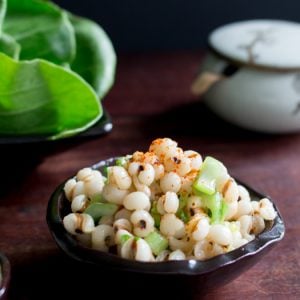
How to Cook Tasty Gluten-Free Job’s Tears
Ingredients
- 1 cup Job’s Tears seeds
(gluten-free, organic)- 1 cup seeds of Job's Tears husks removed and uncooked - 3 cups water or enough to cover the job’s tears by about 2 inches in your pot.
- 1 tablespoon Olive oil
- ½ teaspoon dried red chili flakes
or to desired heat level – can also use 1 teaspoon chili garlic sauce or fresh chili to taste) - 1 inch Ginger
knob peeled and grated (fresh) - 1 clove Garlic peeled and minced
- 1 cup Bok choy
chopped or any vegetable of choice - 1 tablespoon Soy sauce
or tamari if want to keep gluten-free - Salt and white pepper
to taste - Ground chili flakes optional for garnish
Instructions
- Rinse 1 cup dried Job’s Tears in a colander just like you would rice before cooking it.
- Add your rinsed dried job’s Tears in a pot and add enough water to cover the Job’s Tears by a couple of inches. Put a lid on your pot.
- Bring your job’s tears to a boil then reduce the heat to a slow simmer and cook for about 45- 55 minutes or until tender but chewy in texture.
- Drain the job’s tears through a colander.
- Add the olive oil, chili, ginger and garlic to the pan. Cook until aromatic about 30 seconds. Add the cooked job’s tears, chopped baby bok choy, soya sauce and salt and white pepper to taste. Toss until greens are vibrant green in color about 1 minute in the wok.
- Garnish with chili if desired and enjoy!



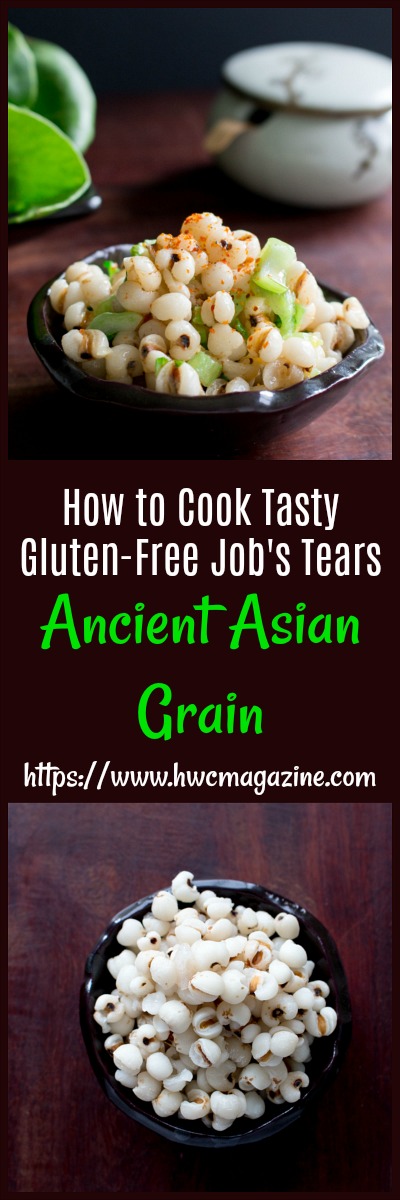
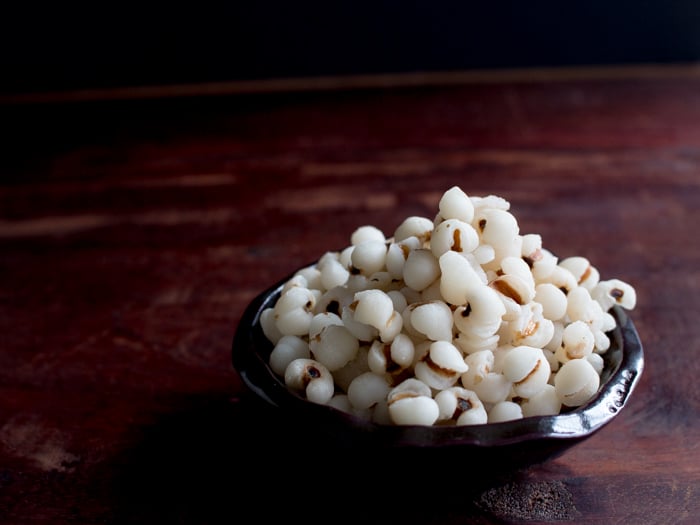
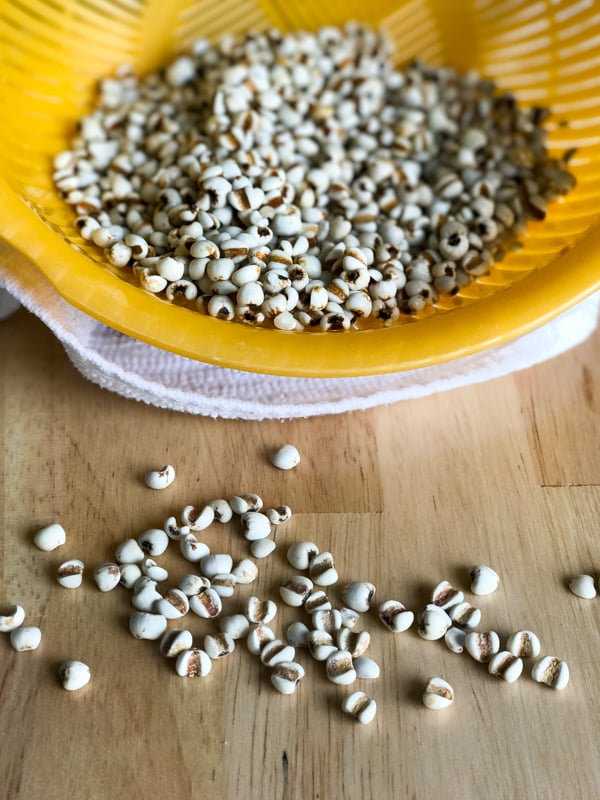

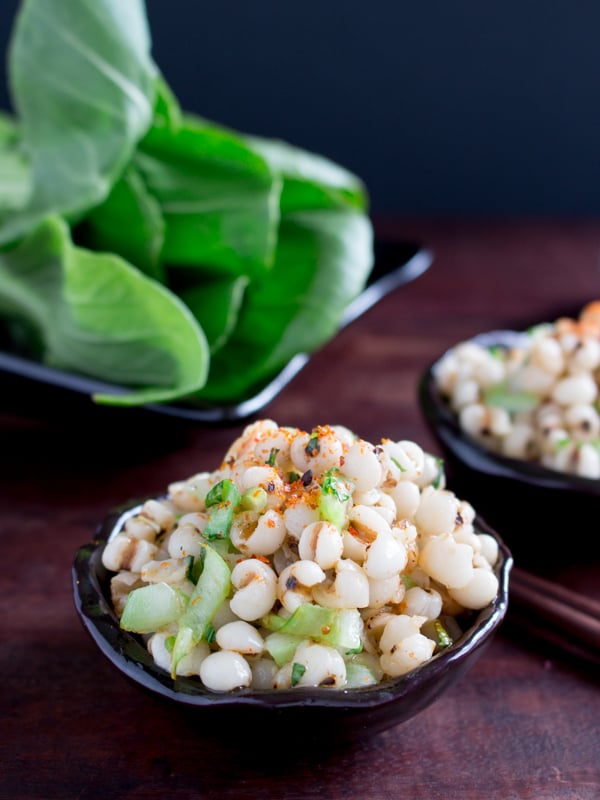
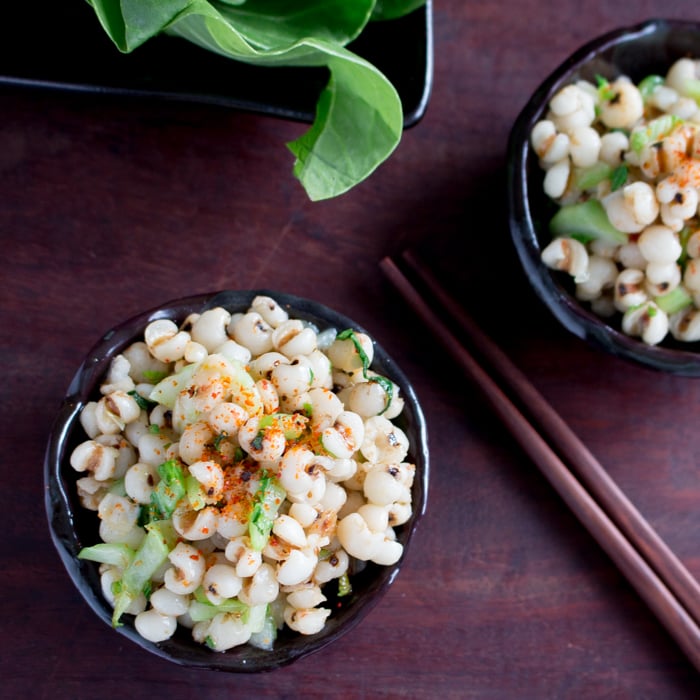
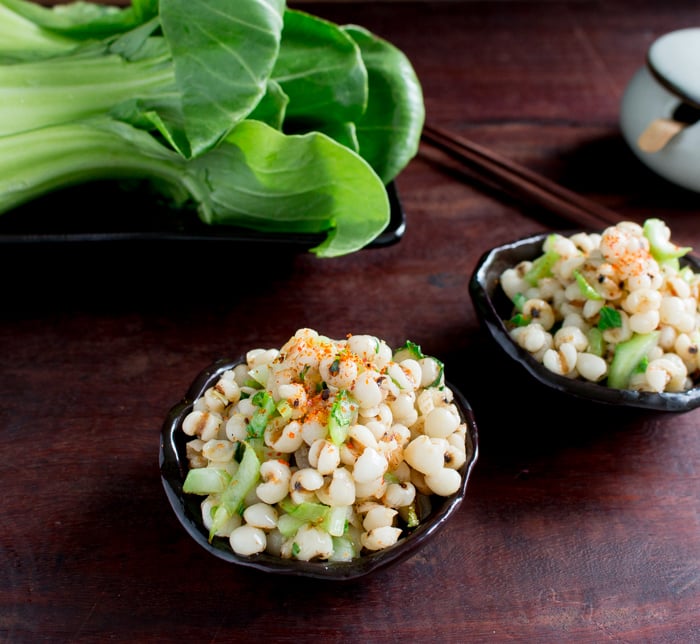

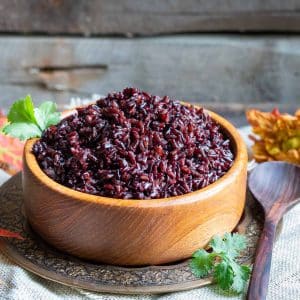



Katherine says
tried to sign up for the recipe book but your link won't accept my email address.
HWC Magazine says
Hi Katherine! We have manually added you to receive our free cookbook. Please let us know if you have any questions. Take care
Vivky says
I heard this from my son’s partner that it is good with diabetes. When i read the packaging it says 0 sugar that’s why i want to try because my blood sugar is already alarming, i hope it will help. Thank you.
Vicky
HWC Magazine says
Hello Vicky! You need to consult with your primary care physician regarding the use of job tears for diabetes as it might react with any current medications you are on. According to scientific health publications, "Job's tears might decrease blood sugar levels. Diabetes medications are also used to lower blood sugar. Taking Job's tears along with diabetes medications might cause your blood sugar to go too low. Monitor your blood sugar closely. The dose of your diabetes medication might need to be changed."
Luis says
I just ordered a package of job tears on amazon and so glad to find your site as I had no idea how to cook and prepare them before adding them to a recipe. Thanks so much. Super helpful post.
HWC Magazine says
Thanks so much Luis. We are delighted to hear that our post on how to cook job tears was helpful to you. Happy Cooking and stay well.
Barth says
Nothing lets you know how to get the hard shell off. I am about to just yank all my plants out and forget it. the hard shell is too much of a hassle.
HWC Magazine says
Hi there Barth! You are growing your own job tears. That is awesome. We purchase our job tears already shelled and hulled from the store. They are really difficult to Hull. Companies that sell job tears have a big hulling machine that does it for them.
Jas @All that's Jas says
I've never heard of job's tears. It reminds me of pearl barley in a way, which I sometimes use instead of rice for stuffing the peppers and cabbage leaves. Wouldn't mind trying these tears. Love your site, btw, but I'm sure I already told you that! Very cohesive and great photography!
Liz Weber Berg says
I have never heard of Job's tears but I have a feeling I'd love this marvelous grain!! I'd love to try it in place of rice. I'll keep my eyes peeled for it around here 🙂
Monica M. says
I love these...usually have had them in soup. But have to admit I never cooked it myself, nor did I even know what they were called. Love how you are educating us!
HWC Magazine says
LOL Monica! In Hong Kong, most generally always had Job's Tears in a sweet dessert soup, how about you? Of course we wanted to test the waters and try this delightful grain in different types of dishes. We have been using this grain in curries, soups and stir frys and love it all ways. The texture is completely addicting.
kitchenriffs says
New ingredient for me -- I've never heard of this! And certainly haven't cooked with them. Thanks for the info -- really interesting post!
HWC Magazine says
So happy to show you something new. John, I bet job's tears would rock in one of your gumbos. You are going to love it's texture and how easy it is to prepare.
Carrie Sandboe says
Hello,
I just ate my first serving of Job's Tears. My acupuncturist told me to treat it like porridge. I prefer the healthiness of steel cut oats so I just soaked the job's tears in milk overnight, like I make overnight oats. It tasted great. Is it ok to consume this way?
Carrie
HWC Magazine says
Hi there Carrie! Job tears are delicious served as a porridge. However, they are a pretty tough grain and can be a bit hard to digest unless you cook them first. Soaking them overnight does start to soften them up a bit but it is best to cook them first to get them tender so you don't have any tummy woes. If you like the idea of overnight oats, cook up a large batch of job tears to get you through the week and then your favorite additions like (milk, cinnamon, maple syrup, etc.) as desired and refrigerate. You can microwave in the morning or place in small containers to eat on the go. You can also cook job tears in the slow cooker overnight and have hot porridge in the morning. I hope this helps. Stay well and take care